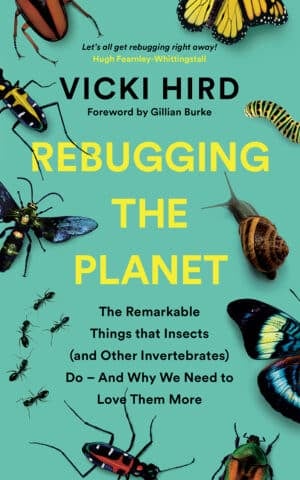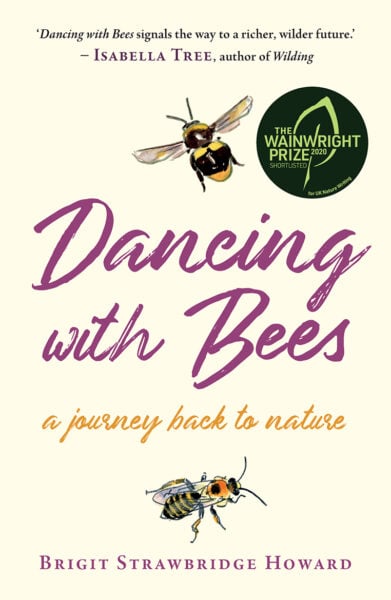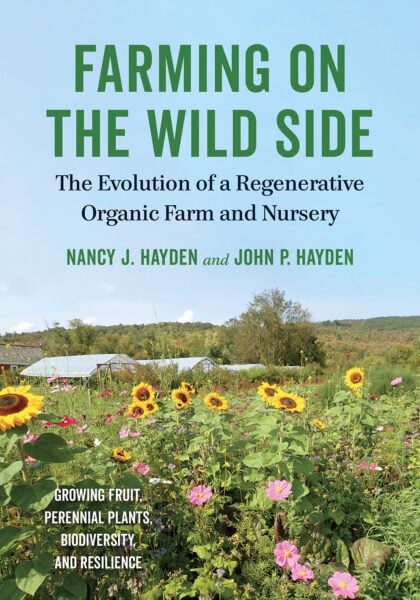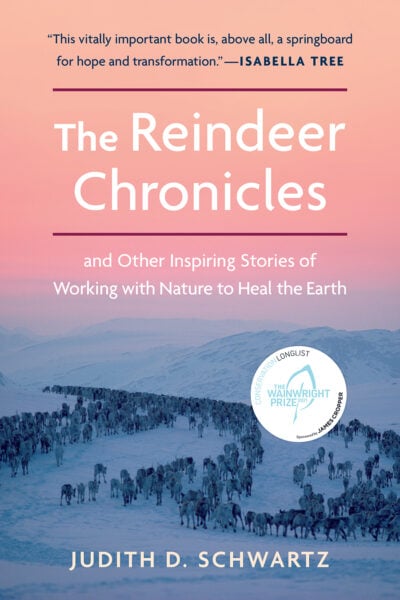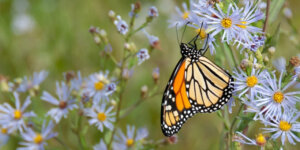Bugs: The Unsung Heroes
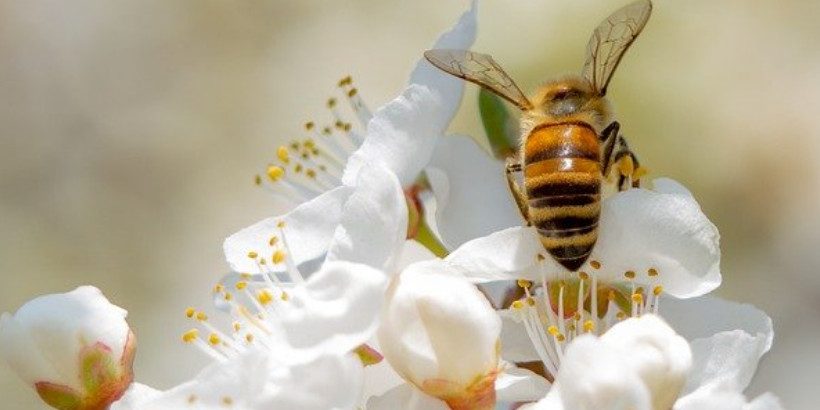
Bugs should be revered for all the vital roles they play in keeping our home inhabitable. Unfortunately, there is a stigma that comes with every bug. Though, without the creepy crawlies, we would be lost and so would nature. Here are a few obscure and iconic bugs that play key roles in nature.
The following is an excerpt from Rebugging the Planet by Vicki Hird. It has been adapted for the web.
Rotifers are expert water protectors
Many of our water and sewage treatment systems rely on bugs. Worms are an essential part of many water treatment systems, helping break down waste materials and aiding the filtration process, but there is a vast army of water purifiers we rarely see even in the wild. Take the tiny rotifer, whose Latin-derived name means ‘wheel bearer’. These are microscopic invertebrates that are critical in purifying water across the globe. They get their name from a circle of cilia – tiny hairs – on their head that look like a spinning wheel. They spend their days moving about in watery environments, eating the bits of organic matter, dead bacteria, algae and other smaller bugs that live or have fallen into the water. Their little crown of hairs direct the morsels of food into their mouth, which they digest, then excrete the unused parts.
By breaking matter up into even smaller pieces, rotifers help the microbes to further decompose this material. The nutrients that are released by this process then become available again for plants and animals to use. The work of the rotifers is not finished there. Through their activities in curbing filament bacterial growth, they may also help to increase the oxygen content in the water, making it more hospitable for other plants and animals to live and breed in. Like worms, rotifers are also a critically important food source for many different species, including larger animals like fish and birds.
Rotifers can be found in virtually every lake and stream, every pond, on bits of moss in moist forest, in the tropics and even in icy Arctic terrains. An almost guaranteed place to find them is in sphagnum moss at the edge of a pond or lake if you have a handy mobile microscope to investigate…
The hummingbird hawkmoth’s tongue
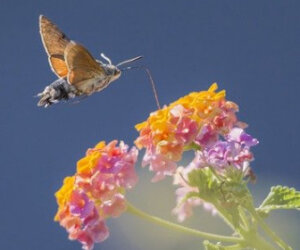
Invertebrates servicing the sexual needs of many of our plants is something most of us are probably aware of but know little about. Most of us have some inkling of pollination. There is the well-known example of the bee – the way they transfer the male pollen from one flower to the female parts of another to enable the plant to produce offspring, and in turn giving us crops like apples, peppers and almonds.
But how about the hummingbird hawkmoth? Their pipe-like ‘tongue’ is precisely adapted to reach the parts of a flower other insects cannot reach. By evolving this extremely long proboscis – strictly speaking, a sucking mouthpart – the moth can penetrate deep into tubular flowers to reach the rich nectar inside.
It is a masterpiece of engineering and design, and even more impressive when you realise its wings move so fast as they hover over flowers that they hum. To be able to move flexibly, it can use free-hovering flight, using a complex set of musclular, sensory and wing adaptations. After the hummingbird hawkmoth leaves the flower it has probed deep for nectar, it takes the dusting of pollen grains, carrying the male genes that have fallen onto its body, to another flower it is visiting. The pollen falls onto the female parts of the next flower and so fertilises the plant.
Such moth-powered genetic mixing, allowing sexual reproduction of the plant, is critical in keeping plant species fertile and vigorous. It is also a beautiful example of excellent design and mutualistic relationships.
Many other bugs (bees, flies, wasps, moths, beetles, ants and even mosquitos) that pollinate plants are usually visiting the flower to get at a food source – the nectar – and carry the pollen by default, though some species also use the pollen they collect too. Bees use it to feed their babies as it provides a vital protein source. A single bee can carry about half her own body weight in pollen.
These sorts of mutually beneficial relationships between bug and plant have evolved over millions of years. In many cases the relationship (and physical attributes that allow it, such as long tongues and complex flower structures) are incredibly elaborate, specific and unique.
Wasps as plant defenders
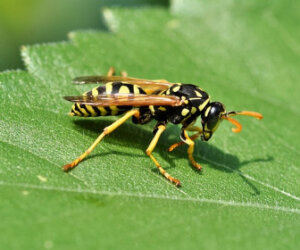 Despite a bad reputation, wasps provide hugely important services – from pollination to pest control. Don’t kill them because they are just as useful as bees and ladybirds and remove many flies you don’t want. If you have a wasp nest and can’t leave it, there are many ways to remove it without harsh chemicals, but it’s wise to get expert advice.
Despite a bad reputation, wasps provide hugely important services – from pollination to pest control. Don’t kill them because they are just as useful as bees and ladybirds and remove many flies you don’t want. If you have a wasp nest and can’t leave it, there are many ways to remove it without harsh chemicals, but it’s wise to get expert advice.
I spent a happy summer in the late 1980s in Suffolk, England, breeding a type of miner fly as part of my pest management studies. The leaf miner fly is considered a pest as it lays its eggs inside leaves and, when the eggs hatch, the maggot larvae bore their way through the leaf, making visible white trails. In large numbers, this can lower fruit yields or make plants unattractive as the leaves are covered in white lines. It is a big problem for large glasshouse crops.
My research was to see whether we could rear a small wasp biocontrol in commercially useful numbers for use in glasshouse crops. The wasp is a ‘parasitoid’, which means it kills the fly by laying its eggs in the fly larvae, which then hatch into wasps and eat the larvae as they grow. I scoured maize crops in the hot sun for signs of leaves with the telltale miner lines and tiny hard pupae metamorphosing inside into the adult cereal miner fly. I would then take these leaves and hatch out the flies in cages, provide the conditions and food plants to encourage them to lay eggs and introduce the wasps into the cages I’d built. It was a blissful time and I found enough fly pupae to start breeding before I left to go back to university. The short study showed you could breed these predator hosts in a glasshouse environment. You can buy such wasps to control leaf miner flies in your glasshouse and so avoid the need for insecticides.
The ladybird pest controller
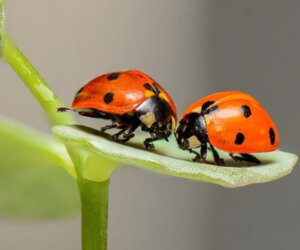 Many invertebrates can be a pain when it comes to food growing. Slugs, aphids, caterpillars, cutworms – all enemies of farmers and gardeners. Billions are spent each year in chemicals and research to kill them off or keep them out.
Many invertebrates can be a pain when it comes to food growing. Slugs, aphids, caterpillars, cutworms – all enemies of farmers and gardeners. Billions are spent each year in chemicals and research to kill them off or keep them out.
But bugs can be a huge friend to the gardener and farmer when given the right conditions. One common example is the ladybird, which is a voracious carnivore and can keep aphid numbers at acceptable levels. The fierce-looking larvae of some species – black armour with red stripes – suggest their predatory nature and they can eat up to fifty aphids a day.
Gardeners may also buy tiny nematode worms (bought in the form of eggs, which hatch when added to water) to control slugs and snails. Such ‘biocontrols’ can be self-sustaining – because the bugs breed future generations of the control – harmless to the public and cost effective. The economic value of naturally occurring biocontrols is hard to assess – you would have to remove them to calculate their contribution – but is likely to be billions of pounds annually.
Recommended Reads
Recent Articles
For too long, bugs have had a negative connotation associated with them. But what if we took the time to observe the benefits of insects? It’s time to rebug our gardens, lawns, and parks! The following is an excerpt from Rebugging the Planet by Vicki Hird. It has been adapted for the web. Adding Bugs:…
Read MoreAsparagus is a delicious vegetable with a layered history. How did this aspiring spear make its way from growing in the wild to appearing on our plates? The following is an excerpt from the The Seed Detective by Adam Alexander. It has been adapted for the web. “Nature gives us the key to every secret…
Read MoreChances are, you’ve seen cattails growing on the edge of your local lake or stream at least once or twice. Instead of just passing these plants, try foraging for and cooking them to create delicious seasonal dishes! The following excerpt is from The New Wildcrafted Cuisine by Pascal Baudar. It has been adapted for the…
Read MoreGarlic mustard: while known as “invasive,” this plant can be consumed in its entirety and has great nutritional value. Plus, the garlic-flavor is a perfect addition to any recipe that calls for mustard! The following are excerpts from Beyond the War on Invasive Species by Tao Orion and The Wild Wisdom of Weeds by Katrina…
Read MorePeregrine falcons, while known as predators, are essential to our environment. These stunning birds have a rich history, an interesting present, and an uncertain future. The following is an excerpt from Feather Trails by Sophie A. H. Osborn. It has been adapted for the web. Who Are Peregrine Falcons? Though relatively uncommon wherever it occurs,…
Read More

